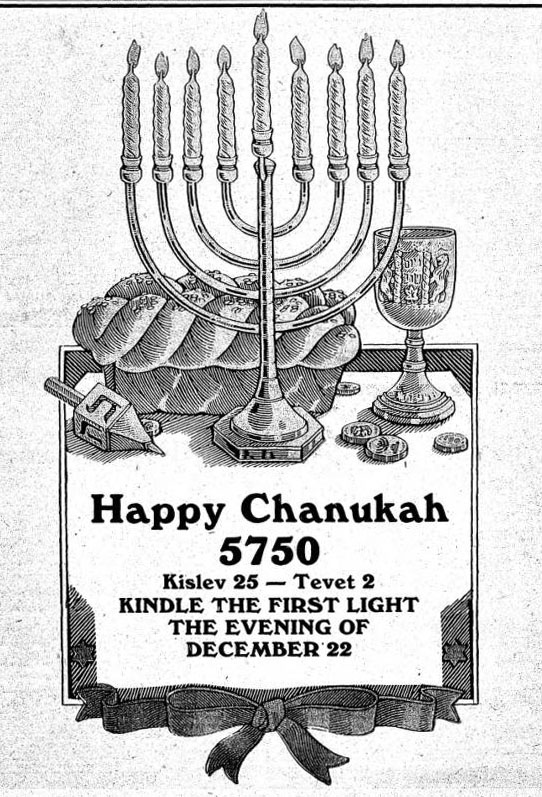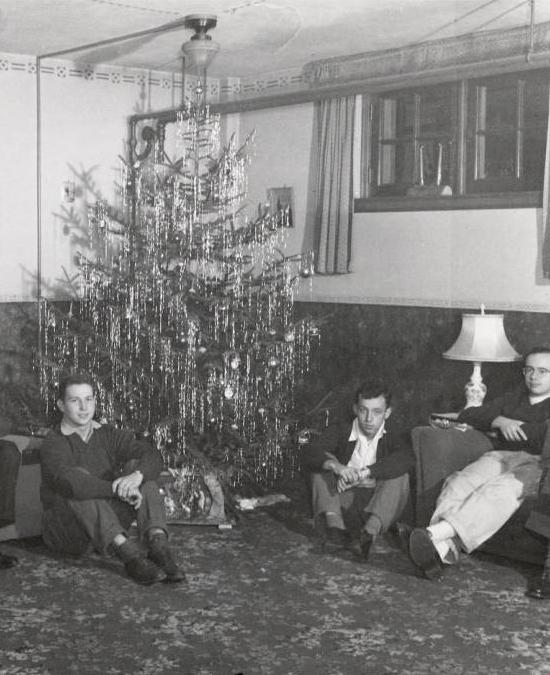A Light in the Darkness: Traditions of Light at Hanukkah and Christmas

In an unusual twist, both Hanukkah and Christmas will take place this weekend, with Hanukkah beginning on Christmas Eve (December 24th) and the first full day falling on Christmas. For both winter holidays, the use of light figures prominently in celebrations and traditions.

Hanukkah, also called the Festival of Lights, takes place over eight days; this year, it will begin on December 24th at sundown. The Hebrew word Chanukah means “dedication,” and the holiday was thus named as it celebrates the re-dedication of the Holy Temple after the Maccabean uprising that defeated the Seleucids, Syrian Greeks who were attempting to force Greek culture upon the people of Israel. At the re-dedication, when the time came to light the Temple’s menorah, they found only enough uncontaminated oil for a single day. Miraculously, however, the small amount of oil lasted for eight days, long enough to purify more oil for use in the Temple.
Today, in Jewish homes throughout the world, menorahs are lit at sundown. Each menorah features eight holders for oil or candles – one for each night of the celebration – and a ninth space for the shamash, or attendant, candle, which is used for lighting the menorah each evening. The shamash candle sits slightly higher in its holder and is traditionally made of beeswax.
Each night of Hanukkah, either at sundown or thirty minutes after (depending on the traditions of one’s community), candles are placed in the menorah (or, if using oil, reservoirs are filled) from right to left, with the number of filled spaces corresponding with the day of the festival (one space the first night, two the second night, and so on). Blessings are recited, and the shamash candle is lit followed by the menorah from left to right. For the thirty minutes following the lighting, stories are told, dreidels are spun, and the lights are enjoyed. After thirty minutes, the flames may be extinguished and the menorah may be moved. Traditionally, the menorah was lit in the doorway of one’s home facing the street, but over time, window placement has become acceptable as well. Either placement allows passersby to see the menorah and reflect upon the blessings and miracles of the season.
Christmas lights have their roots in both Paganism and Christianity. Christmas closely coincides with the Pagan festival of Yule, a celebration of the sun which takes place on the winter solstice, the longest night of the year. Bonfires brought light to the darkness, and a Yule log was lit to represent the birth of the new sun, which would begin its ascent the following day, lengthening the daylight hours until summer solstice. Neopagans who celebrate Yule today frequently burn Yule logs and place candles and other representations of the sun (oranges, for example) on their altars, reciting blessings of gratitude for the sun’s warmth and light.

Christians have incorporated many Pagan traditions into Christmas celebrations, and the use of light is one example. Lights on Christmas trees, on houses – on anything that stands still! – incorporate the beauty of light in the darkness. One example of light, however, is entirely Christian: the placement of a star at the top of a Christmas tree, which is representative of the Star of Bethlehem, one of the most well-known guiding lights of Christianity. The Book of Matthew tells the story of the birth of Christ and states that the three wise men, while traveling to Bethlehem to greet the baby Jesus, were guided by a star: “And behold, the star that they had seen when it rose went before them until it came to rest over the place where the child was. When they saw the star, they rejoiced exceedingly with great joy. 11And going into the house, they saw the child with Mary his mother, and they fell down and worshiped him. Then, opening their treasures, they offered him gifts, gold and frankincense and myrrh.”
When the days are cold this season, we hope you are warmed by lights in the darkness. Happy holidays from Ohio Memory!
Thank you to Shannon Kupfer, Digital Initiatives Librarian at theState Library of Ohio, for this week’s post!



Leave a Reply
You must be logged in to post a comment.